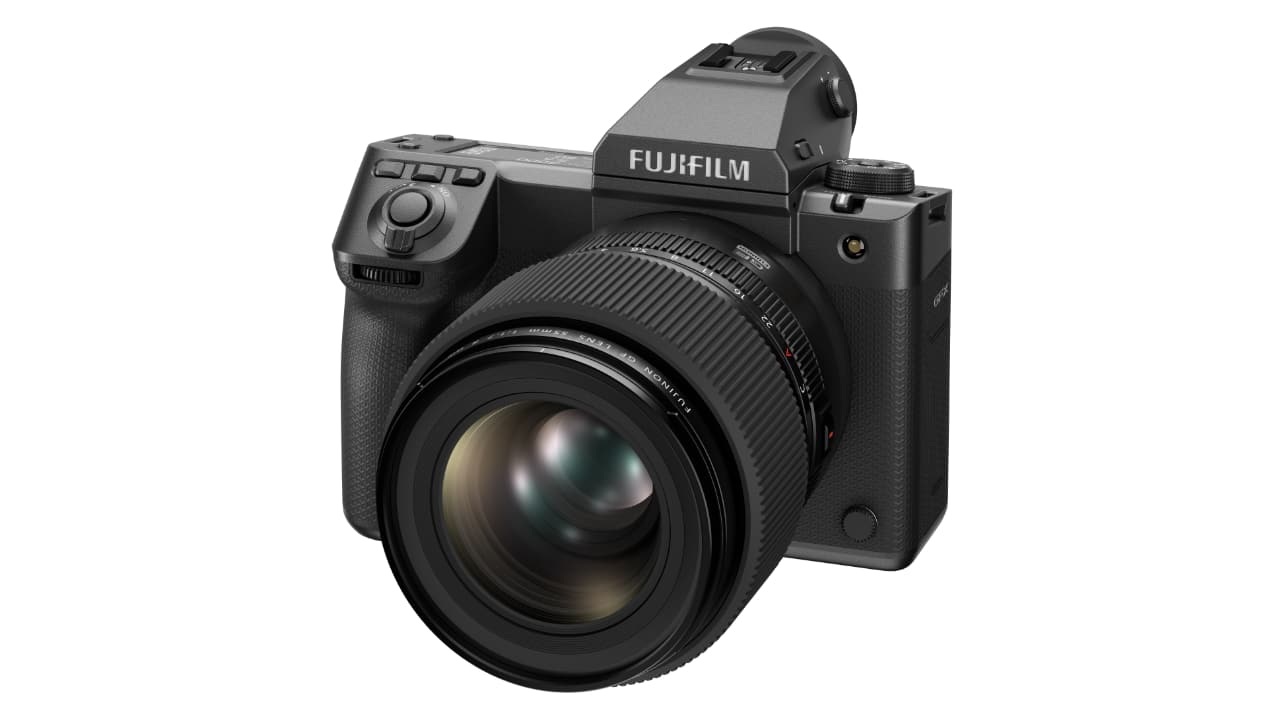
The new GFX100 II is the latest addition to the GFX Series of mirrorless digital cameras. It incorporates a 55mm large-format image sensor alongside a host of decent video features.
The GFX100 II features the newly-developed 102MP high-speed image sensor, catchily dubbed the GFX 102MP CMOS II HS, which is coupled with the company's X-Processor 5 high-speed image processing engine to deliver what Fujifilm reckons is "the highest burst-shooting, AF and video performance in the history of the GFX Series."
That praiseworthy spec means it will cost you around $7499 when it ships at the end of September.
It is the first GFX Series mirrorless digital camera that features the AI-based subject-detection AF, developed with Deep Learning technology, as well as the latest predictive AF algorithm. The burst mode performance has also been enhanced from the current model to 8.0 frames per second, while the stabilisation performance has been improved to eight-stop five-axis to broaden the scope of use cases where high-speed performance is essential.
Even better, the use of the new sensor has also led to significant enhancement of video recording capability. The GFX100 II is the first GFX Series camera that supports 8K/30P video and can also internally record 4K/60P 4:2:2 10-bit video. Furthermore, it offers new 'Video Format' modes to enable video recording in multiple formats, including Premista, 35mm, and anamorphic (35mm) with the mount adapter. Video recording in various situations is catered for adroitly thanks to the enhanced sensor readout speed and the tracking AF, which automatically tracks a subject to keep it in focus.
The camera body is equipped with an Ethernet port as well as HDMI Type A and USB-C terminals to broaden connectivity with external devices significantly for diverse peripheral combinations. In addition, the high-magnification, high-definition EVF that ensures high visibility and the functional beauty of the body design supports a comfortable shooting experience for professional photographers and filmmakers.
Video spec in detail
Fujifilm thoughtfully bullet-pointed the new camera's video performance spec, and it being a slightly busy time of year, we thought we'd pass them along as is.
- This is the first GFX Series model capable of recording 8K/30P video. It can also record 4K/60 4:2:2 10-bit video internally, demonstrating significant improvement in video performance thanks to the new sensor.
- Users can film a moving subject naturally due to the increased sensor readout speed and suppression of the rolling shutter effect. The non-extended ISO100 is also available in video mode to deliver even higher image quality in video footage.
- The GFX100 II supports three Apple ProRes codecs, i.e. Apple ProRes 422 HQ, Apple ProRes 422 and Apple ProRes 422 LT. When shooting in Apple ProRes, the camera can use proxy video recording such as Apple ProRes 422 Proxy, which reduces video editing workload to streamline the overall workflow from filming to postproduction.
- The camera features Video Format modes, enabling video recording in multiple formats, including Premista, 35mm, and anamorphic (35mm) with the mount adapter.
- The tracking AF function for video recording has been added. Users can touch the screen to specify a subject to be tracked while filming in the AF-C + Wide / Tracking AF mode. This allows the camera to track the right subject when multiple subjects are in the frame.
- This is the first GFX Series camera that features F-Log2 with dynamic range expanded up to 14+ stops. This enhancement enables video recording with enriched tonality, significantly broadening post-production potential.
- The GFX100 II can output up to 8K/30P 12-bit video in RAW data via HDMI. The camera can record video in the Apple ProRes RAW format when used with the NINJA V+ monitor by ATOMOS and in the Blackmagic RAW format when used with the “Video Assist 12G” monitor by Blackmagic Design.
- The camera supports timecode synch with ATOMOS AirGlu BT. This enables seamless timecode synching with multiple cameras, meeting demand from various video production sites.
Tags: Production


Comments